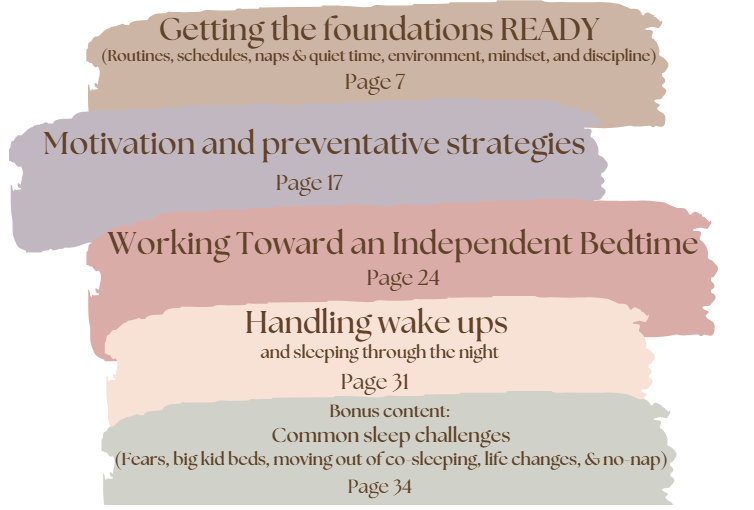Navigating the 2-Year Sleep Regression: Why It Happens and How to Handle It with Loving Boundaries
- Kelsey Flores

- Apr 30
- 4 min read
As a sleep consultant, I frequently hear from parents dealing with the infamous 2-year sleep regression. It’s one of the most challenging phases, leaving both parents and toddlers frustrated. Suddenly, your once sound sleeper is resisting bedtime, waking up frequently during the night, or refusing naps altogether. So, what’s going on? The 2-year sleep regression isn’t just about developmental milestones—it’s a toddler’s desire for more power and control. Understanding this shift and how to respond with loving boundaries is key to helping your little one through this phase.
What Is the 2-Year Sleep Regression?
Around the age of 2, toddlers experience rapid cognitive, emotional, and physical development. They are learning new things every day, becoming more aware of their surroundings, and starting to test boundaries. They are also learning how to assert themselves and explore their newfound independence, and bedtime is one of the easiest places to exert this newfound power.
For many toddlers, the transition from baby to toddler comes with a desire to control their world. Sleep, of course, is one of the things they can control. This is when many parents experience a sudden surge in bedtime protests, night wakings, or resistance to naps. The very act of sleeping becomes something they want to control.
Why Does the 2-Year Sleep Regression Happen?
Development of Independence: At this age, toddlers are becoming more aware of their independence. They want to feel in control, which often leads to testing boundaries—especially at bedtime. Your child may resist sleep because they feel it’s the one thing they can “control” when the rest of the day may feel overwhelming or too structured.
Separation Anxiety: Toddlers are also becoming more attached to their caregivers, and sleep often means separation. This fear of being alone can trigger resistance, as they want to stay close to you, and bedtime becomes the battle to avoid that separation.
Cognitive Growth: As their brain develops, toddlers experience new intellectual abilities, including enhanced memory and problem-solving skills. At night, this burst of mental activity can make it difficult for them to switch off and fall asleep, especially if they are now aware of things that might have seemed like small details before (like shadows, sounds, or a fear of the dark).
Testing Limits: For toddlers, bedtime is often a time when they feel they can push the limits. It’s not uncommon for toddlers to test your patience by stalling or insisting on having “one more” of everything—whether it’s another hug, another drink, or another story. Their behavior is often more about wanting control than about needing that last request.
How Can Parents Navigate the 2-Year Sleep Regression with Loving Boundaries?
While the 2-year sleep regression can be frustrating, it’s also an opportunity to teach your child valuable lessons about boundaries and self-regulation. Setting loving, but firm, limits is the key to successfully navigating this phase.
Here’s how to approach it:
Establish a Consistent Bedtime Routine: Consistency is your best friend during the 2-year sleep regression. A predictable, calming bedtime routine signals to your toddler that it’s time for sleep. Whether it’s a bath, storytime, or snuggles, make sure to stick to a routine every night. This gives your child structure and helps them feel more secure.
Set Clear and Loving Boundaries: While your toddler may test your patience, it’s important to stay calm and firm. If your toddler insists on another story, a drink, or another cuddle, it’s okay to say, “It’s time for bed now, sweetheart.” Repeat it kindly but firmly. Toddlers need boundaries to feel secure, and while it’s tempting to give in to their pleas, maintaining those boundaries helps them understand that sleep is non-negotiable.
Acknowledge Their Feelings: It’s important to validate your toddler’s feelings without giving in to demands. You can say something like, “I know you’re not ready to go to sleep, and I understand that you want to stay up, but it’s bedtime now. You’re safe and I’ll be here when you wake up.” This shows empathy without compromising your boundaries.
Avoid Reinforcing Sleep Struggles: As much as you may want to comfort your toddler when they cry or protest, avoid reinforcing bad habits (like bringing them to your bed or staying in the room until they fall asleep). Instead, offer reassurance and then give them the space to fall asleep on their own. If you repeatedly give in to their requests, it can become a pattern that makes it harder for both of you down the line.
Be Patient: This phase will pass, but your toddler needs to feel confident in the boundaries you’ve set. Some nights will be harder than others, but consistency will help them learn to self-soothe and fall asleep independently. Trust in the process and be patient with both yourself and your child.
Need More Help Navigating the 2-Year Sleep Regression?
The 2-year sleep regression can feel overwhelming, but with the right approach, you can help your toddler learn to embrace sleep while maintaining the loving boundaries they need. If you're looking for more tips and step-by-step strategies to manage bedtime resistance, the Toddler Sleep Guide is packed with practical advice to help you navigate this challenging phase and get your toddler back to sleeping soundly.






Comments